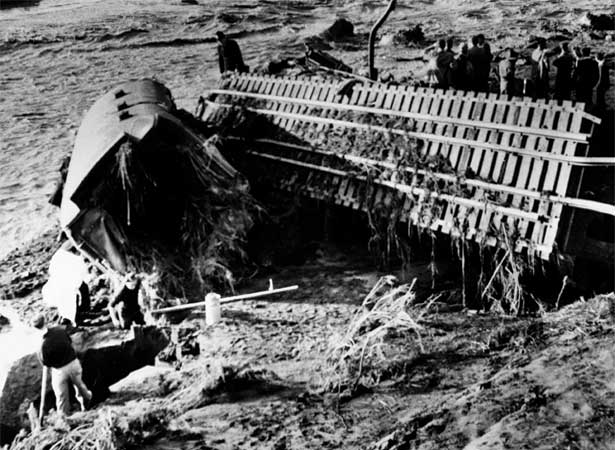
The worst railway disaster in New Zealand’s history occurred on Christmas Eve 1953, when the Wellington–Auckland night express plunged into the flooded Whangaehu River, just west of Tangiwai in the central North Island. Of the 285 people on board, 151 were killed.
The cause of the tragedy was a volcanic lahar from the Mt Ruapehu crater lake, which sent a huge wave of water, silt, boulders and debris surging down the Whangaehu River minutes before the express approached the bridge at Tangiwai. The engine driver applied the emergency brakes, but it was too late to prevent the locomotive, its tender and the five second-class carriages plunging off the weakened bridge into the raging torrent. The leading first-class carriage toppled into the water moments later.
The nation was stunned. New Zealand’s relatively small population (just over 2 million) meant that many people had a direct relationship with someone involved. The timing of the accident added to the sense of tragedy. Most of those on the train were heading home for Christmas with presents for friends and family.
Read more on NZHistory
Travelling by train – The North Island main trunk lineWrong place at the wrong time – Tangiwai disasterNew Zealand disasters timeline – New Zealand disasters timeline1953 - key events – The 1950sTangiwai rail disaster - roadside stories – New Zealand disasters timeline
External links
How to cite this page
'Tangiwai railway disaster', URL: https://nzhistory.govt.nz/tangiwai-railway-disaster-0, (Ministry for Culture and Heritage), updated 25-Jan-2023
